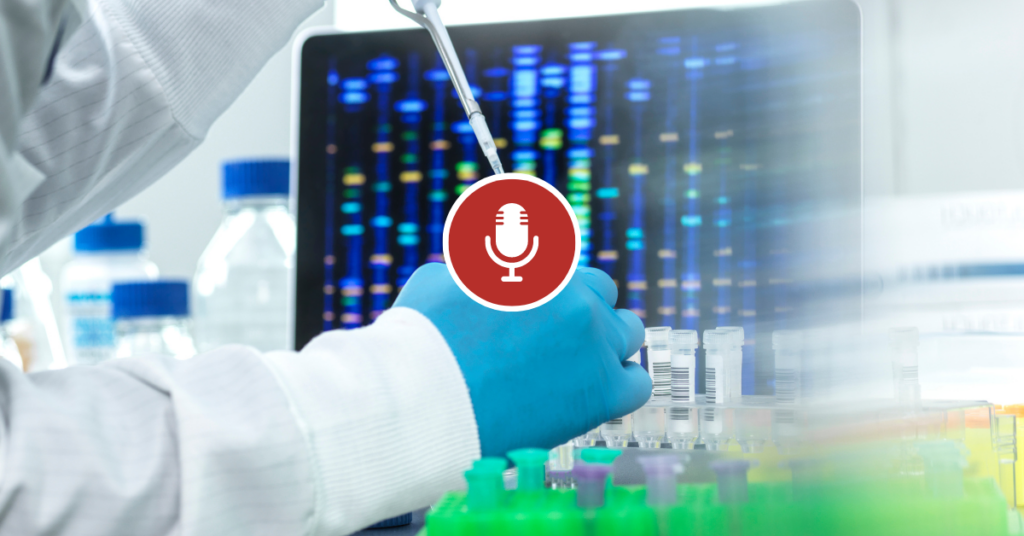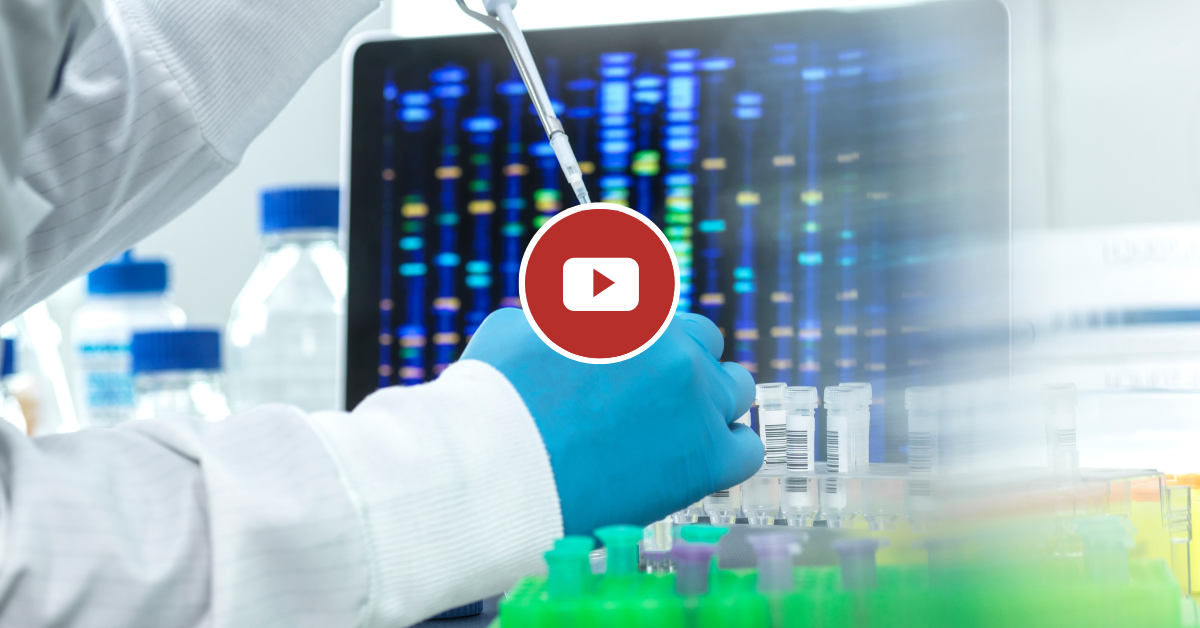Artificial intelligence (AI) isn’t just for apps and algorithms. AI’s ability to sort through massive data sets has the potential to completely revolutionize the field of biotechnology, opening the door for real-world breakthroughs like climate change-resistant seeds or cures for genetic diseases. While scientists and firms from the United States and China are actively collaborating to explore this scientific frontier, increasing national security concerns put AI-biotech’s future development at risk. What is at risk when scientific exchange is limited?
Abigail Coplin, Assistant Professor of Sociology and Science, Technology and Society at Vassar College, joins the National Committee to discuss American and Chinese views on the importance of biotech, and the impact of national security on this emerging field.
Transcript
What is biotechnology? How does it relate to artificial intelligence?
Abigail Coplin: At the most basic level, biotechnology is a science driven industry that employs molecular biology and biological processes to create new technological applications. These applications include everything from new drugs and medical therapeutics like gene therapies and mRNA vaccines to higher yield climate change resistant seeds and new biomaterials. It is a transdisciplinary endeavor that encompasses fields like genomics, bioinformatics, genetic engineering, crop science, and even material science, and it often employs techniques like gene editing and genetic modification, amongst countless others, as its tools. Given the biology and medicine have entered the so-called Big Data era, AI and biotechnology have become increasingly intertwined in recent years.
To create precision medicine, for instance, we have to be able to identify the genetic signaling cascades at the root of different diseases. Doing this often requires compiling and manipulating datasets on the scale of tens of millions of genetic samples. Similarly, as we start to understand different diseases on a genetic and molecular level, we have to be able to efficiently identify potential drug targets and design drugs and delivery systems to be able to interact with these targets. AI and machine learning are being employed in all of these processes in both the U.S. and China. For instance, just a couple of weeks ago, a Hong Kong based company called Insilico, started conducting phase two trials for the world’s first AI discovered and designed drug to be trialed in humans. It’s a drug for pulmonary fibrosis. They’re currently starting with trials in China and hope to expand to the U.S in the next year or so.
Is there possible collaboration in the biotech and AI fields between the U.S. and China?
Abigail Coplin: The short answer is yes, but it’s getting much more difficult. Biotech has been increasingly politicized and securitized in both the US and China as of late, but simultaneously, it remains an intrinsically transnational industry. Separating American from Chinese biotechnology is not as easy as one might think.
Speaking as an ethnographer, I can tell you that at the level of individual researchers and entrepreneurs across the US China divide these individuals and tell each other really well. They went to grad school together, they go to the same conferences, they trade postdocs and grad students back and forth, they socialize together. When they start companies, they do so with their former classmates, or they put their former dissertation adviser on their scientific advisory committee. This is particularly true given the fact that the majority of entrepreneurs and China’s biotech industry right now are returnees [from the United States back to China]. Given these dynamics, nationality is often not particularly salient in terms of the lived experience of the industry.
Moreover, when it comes to firms, many firms are born global, which isn’t particularly surprising given their founders’ biographies.
By born global, I mean that from the onset, these firms adopt business models that hinge on operating in and leveraging differences between the American and Chinese R&D [research and development] ecosystems.
Moreover, when it comes to forming collaborative partnerships or engaging in cross-licensing agreements, firms are generally looking for complementary services, expertise, and intellectual property irrespective of their partner’s nationality. Consequently, there’s been a number of collaborative partnerships between American and U.S. firms at the nexus of biotechnology and AI in recent years. For example, just a few weeks ago, American Pharmaceutical giant Eli Lilly just signed a $250 million collaborative partnership with Chinese startup XtalPi. Per this agreement, XtalPi will use their AI driven algorithms to identify potential drug candidates, and then Eli Lilly will shepherd these candidates through the clinical trial and commercial development process.
Another example from the past year so it would be Arbor Biotechnologies, a startup based in Cambridge, Massachusetts that specializes on using machine learning and AI to identify new nucleases capable of gene editing, partnering with Edigene, a Beijing based Chinese biotech company that specializes in translating gene edited technologies into new ex vivo therapeutics. Collectively, these two firms are working to develop new ex vivo cell therapies for various forms of cancer. Suffice it to say that R&D partnerships between the US and China are absolutely possible in biotech and complete an integral role in advancing science and medicine.
Concurrently, however, collaboration is getting increasingly harder. In both the U.S. and China, Biotechnology has become increasingly viewed exclusively through the lens of national security. On the American side, the FBI’s China Initiative and the NIH’s recent investigations into researchers ties to China have left American researchers leery of engaging with their Chinese peers. Similarly, ongoing talk of increased export controls and capital controls have left a number of American firms reticent to invest in or engage in collaborations with their Chinese counterparts.
On the Chinese side, the government’s recent regulations on the management of human genetic resources have made it exceedingly difficult for Chinese researchers in the biological sciences to partner with their international peers. Moreover, there’s also been discussion within the Chinese government of potentially banning the export of gene editing technologies.
Ultimately, the over-securitization of biotechnology will not only hold back innovation globally, it also might actually hurt both the US and China’s innovation capacity. The nature of competition in biotech and AI is different than for instance, semiconductors. There’s not as big of a “first mover” advantage. Rather to stay competitive and biotech, you need to stay engaged with your competitors, not wall yourself off from them. It’s a bit of the academic mode of competition. You don’t try to separate yourself from your competitors; rather, you try to get on panels with them, you trade postdocs with them, you might even invite them for kind of a passive-aggressive coffee at the end of a conference. The idea is that even if they beat you to the punch the first time, if you keep up with the cutting edge and stay abreast of what everyone else is doing, chances are you’ll be able to beat your competitor to the punch the next time.
Also, when it comes to technologies like biotech, particularly when we’re talking about new technologies like gene editing, we are all more secure when we know what one another are doing than when we don’t.
Why is biotech an important field for both countries, the United States and China, to invest in?
Abigail Coplin: At its core, most research and development in biotechnology is about curing diseases and feeding people. While clearly my own research interests lead me to be a bit biased, I would be hard-pressed to identify another high-tech industry that is more directly entwined with the future well-being of both the American and Chinese population, than one that’s centered on things like eradicating suffering from genetic disease and creating new crops capable of resisting climate change.
Clearly, both countries need to be investing heavily in this field we all need to be investing in and advancing these kinds of technologies as these problems are shared globally. While competition can absolutely catalyze innovation, we can’t let notions of national technological competitiveness stymie the advancement of science. When we improve our understanding of, for instance, of the mechanisms behind different forms of cancer, or develop a new gene therapy for something like Batten disease, humanity benefits, regardless of from where this innovation emerges.
This transcript has been lightly edited for clarity. Please refer to the video interview to ensure accuracy.

